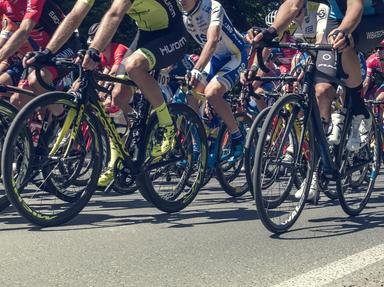
Pretty in Pink Trivia Quiz
Giro d' Italia Winners
The "Maglia Rosa" of the Giro d'Italia is one of the most prestigious jerseys in road cycling. All of these cyclists have earned the honour of wearing the pink jersey. Place the riders in the correct order that they looked pretty in pink and won the Giro
An ordering quiz
by KayceeKool.
Estimated time: 3 mins.
- Home
- »
- Quizzes
- »
- Sports Trivia
- »
- Cycling
- »
- Italy